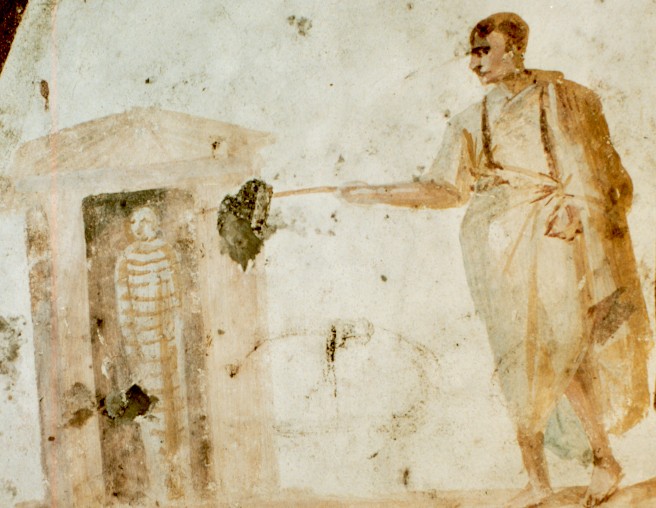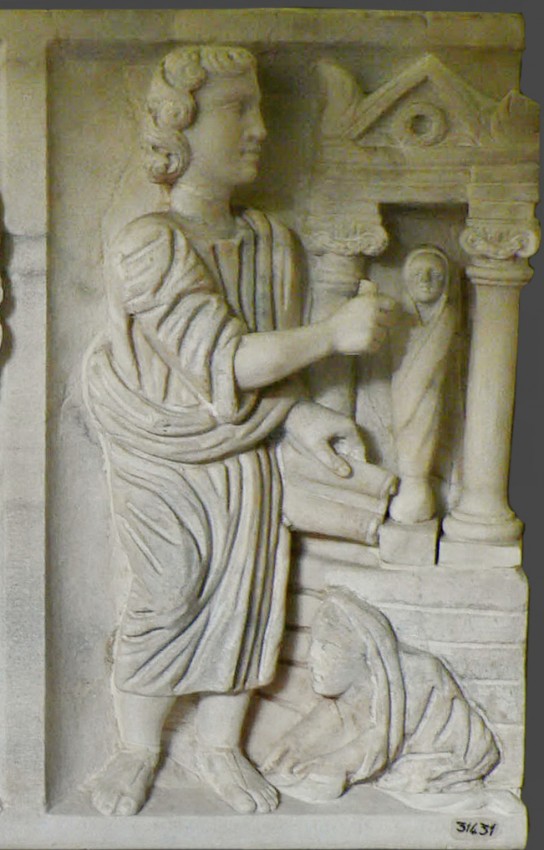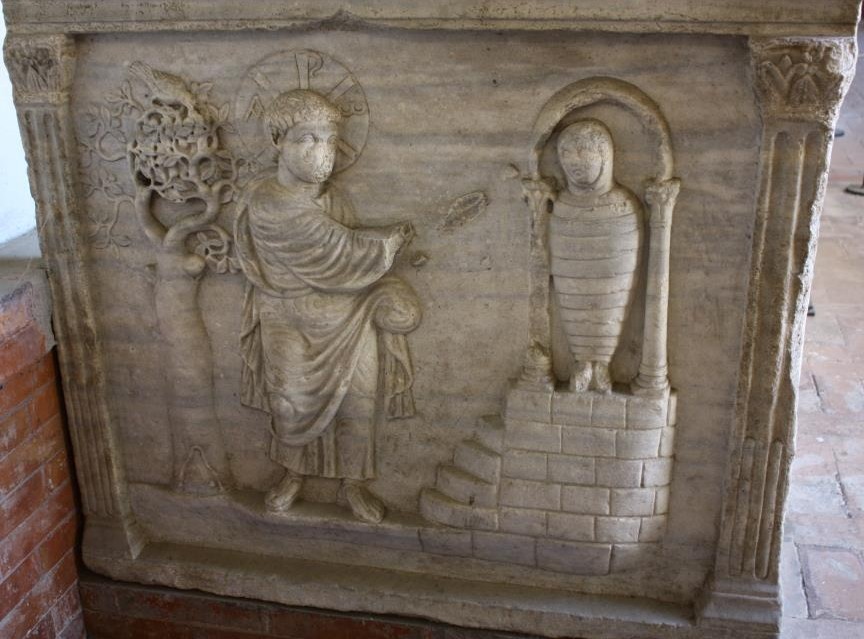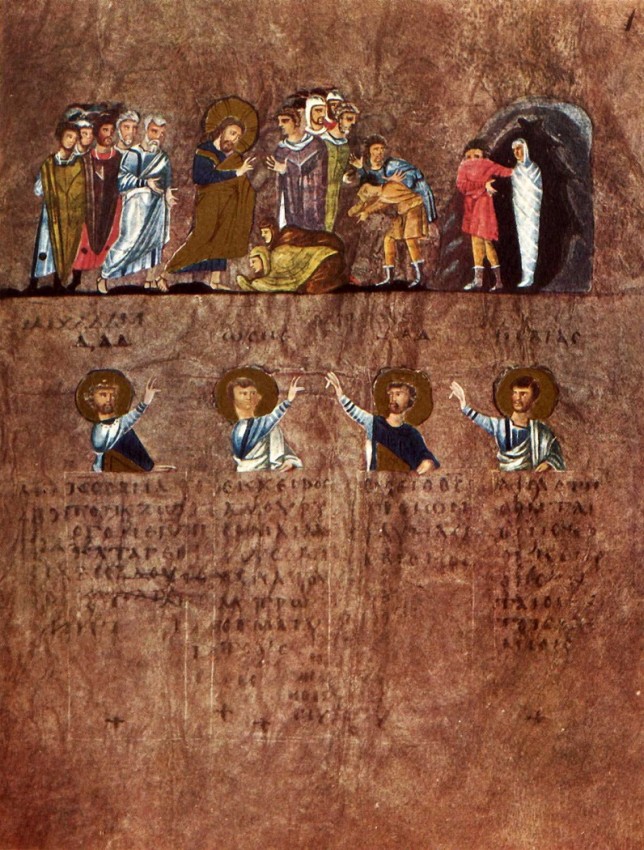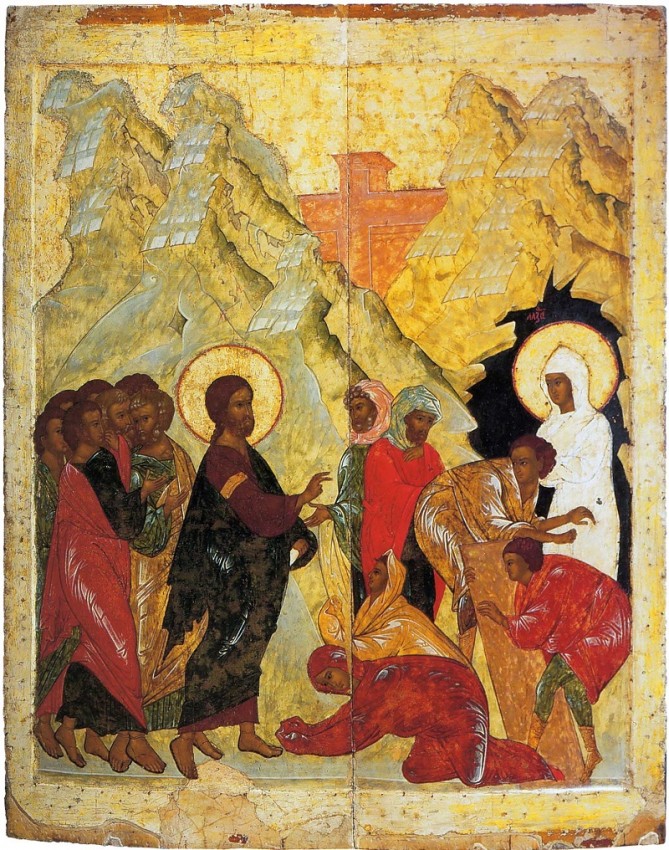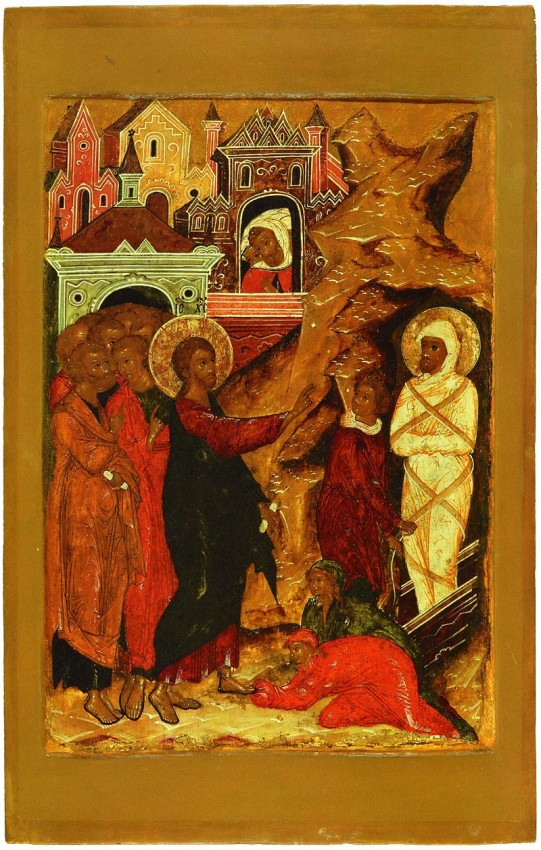The Resurrection of Lazarus: Icons
Photogallery
The Gospel story of the Resurrection of Righteous Lazarus is one of the earliest depictions in Christian pictorial art. Most likely the iconographic tradition of the Resurrection of Lazarus formed earlier than the celebration of this Gospel event. This theme can be found in the earliest of Christian monuments that have been preserved to our days, including the wall paintings in the catacombs and bas-reliefs on sarcophaguses.
It is quite logical that the catacomb frescos and bas-reliefs are connected with the theme of the resurrection from the dead and the victory over death. The artists needed to express their faith in the deliverance from original sin, and the decay and death that goes along with it. The theme of the Resurrection of Lazarus points to the future general resurrection, and therefore it often appears in burial sites.
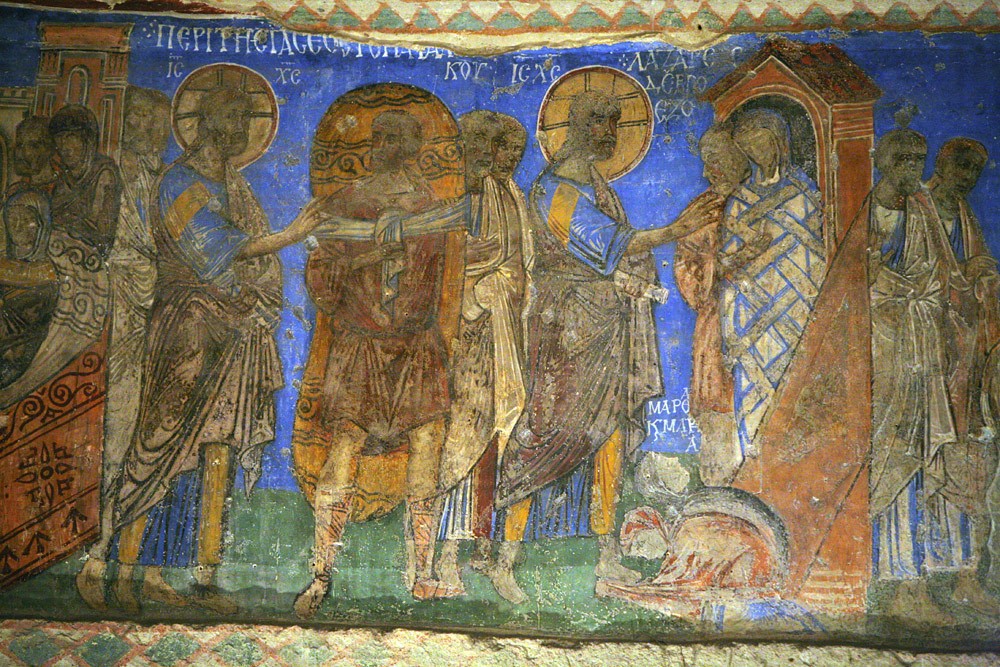
The Resurrection of Lazarus, frescos in the church of Tokali Kilise, Göreme in Cappadocia, Turkey. 9th–10th c.
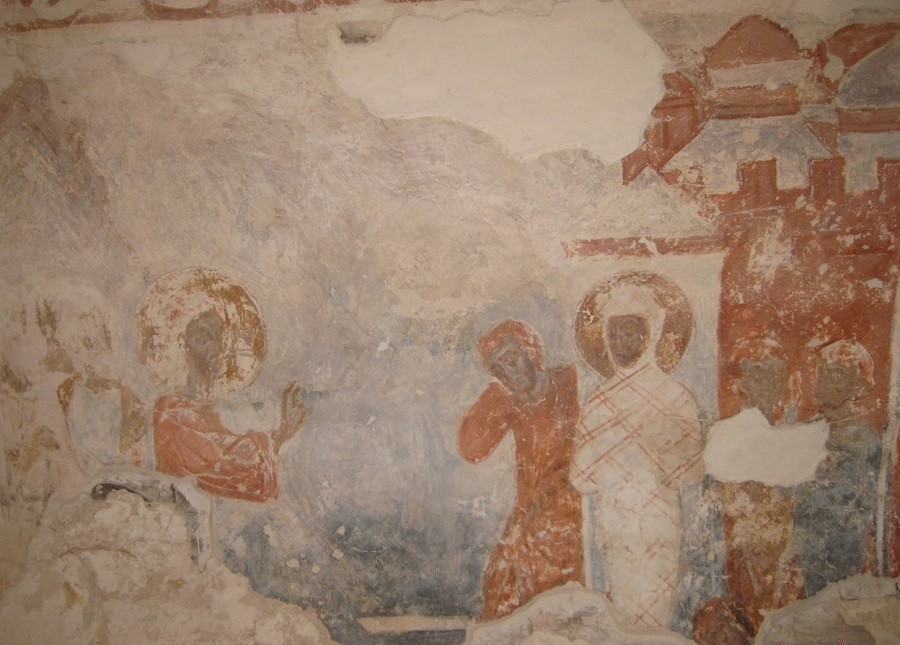
Fresco in the Cathedral of the Nativity of the Mother of God in Snetogorsk Monastery, Pskov, Russia, 1313.

The Resurrection of Lazarus. Fragment of an icon from the festal row on the iconostasis of the Novgorod St. Sophia Cathedral, Russia. Circa 1341.
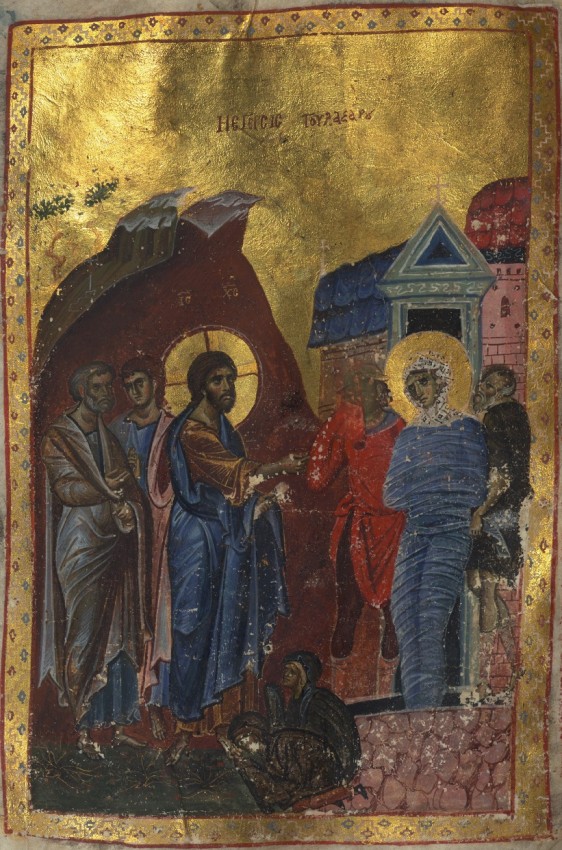
The Resurrection of Lazarus. Miniature from the Trebizond Gospel, Byzantium, Constantinople. Mid-11th c. Walters Museum, U.S.A.

The Resurrection of Lazarus, from the festal row of the iconostasis of the Dormition Church in the village of Bolotovo near Novgorod, Russia 1470–1480.
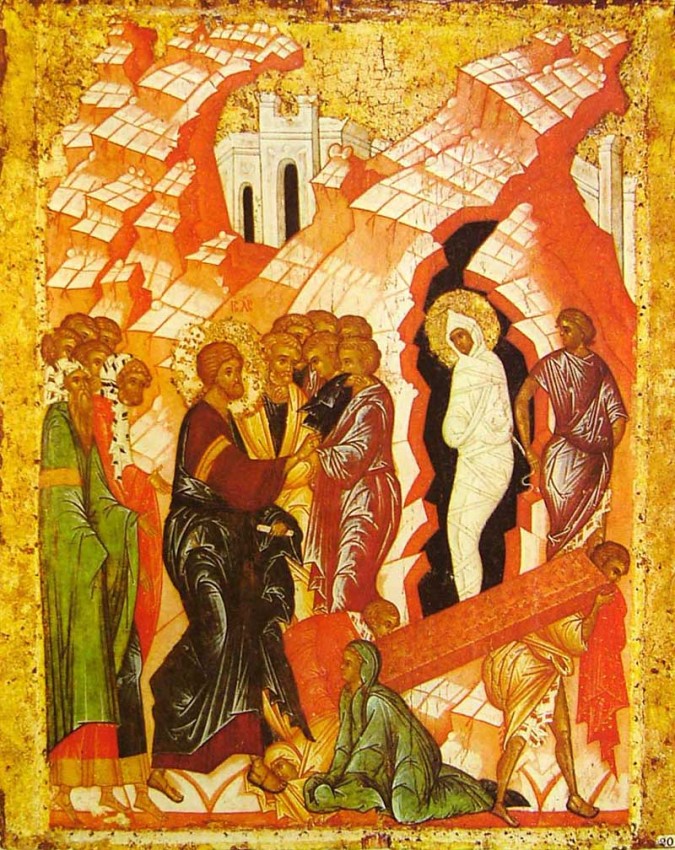
The Resurrection of Lazarus, icon from the St. Cyril of White Lake Monastery, late 15th c. Russian Museum, St. Petersburg, Russia.
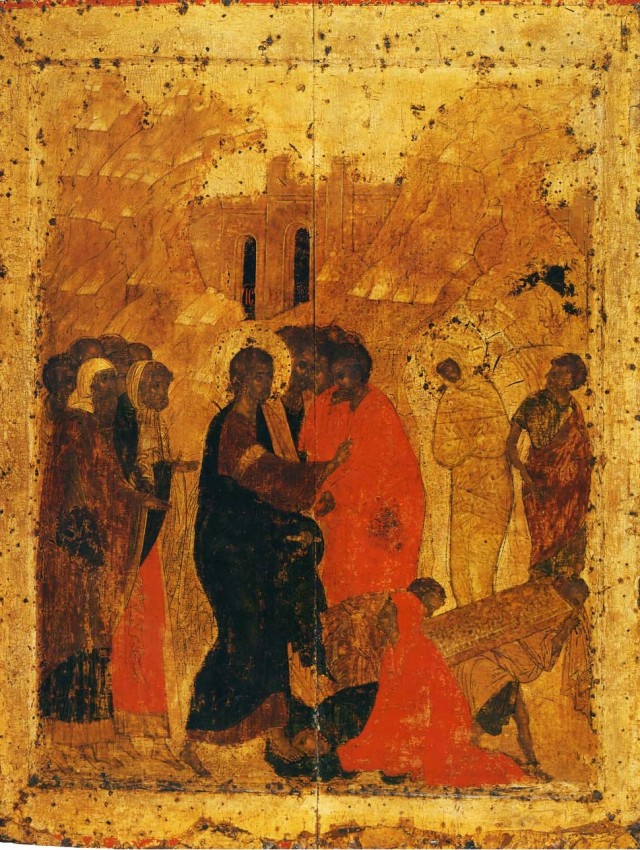
The Resurrection of Lazarus, from the festal row of the iconostasis in the Annunciation Cathedral of the Moscow Kremlin. Early 15th c. (1410–?).
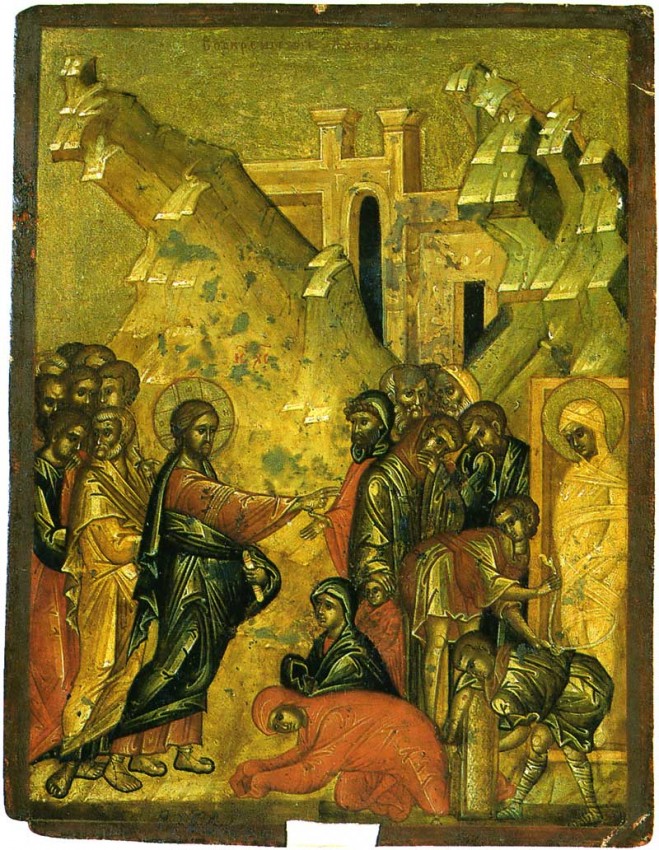
The Resurrection of Lazarus, Holy Trinity St. Sergius Lavra, Second quarter of the 15th c. Sergiev Posad Museum.
20 апреля 2019 г.


